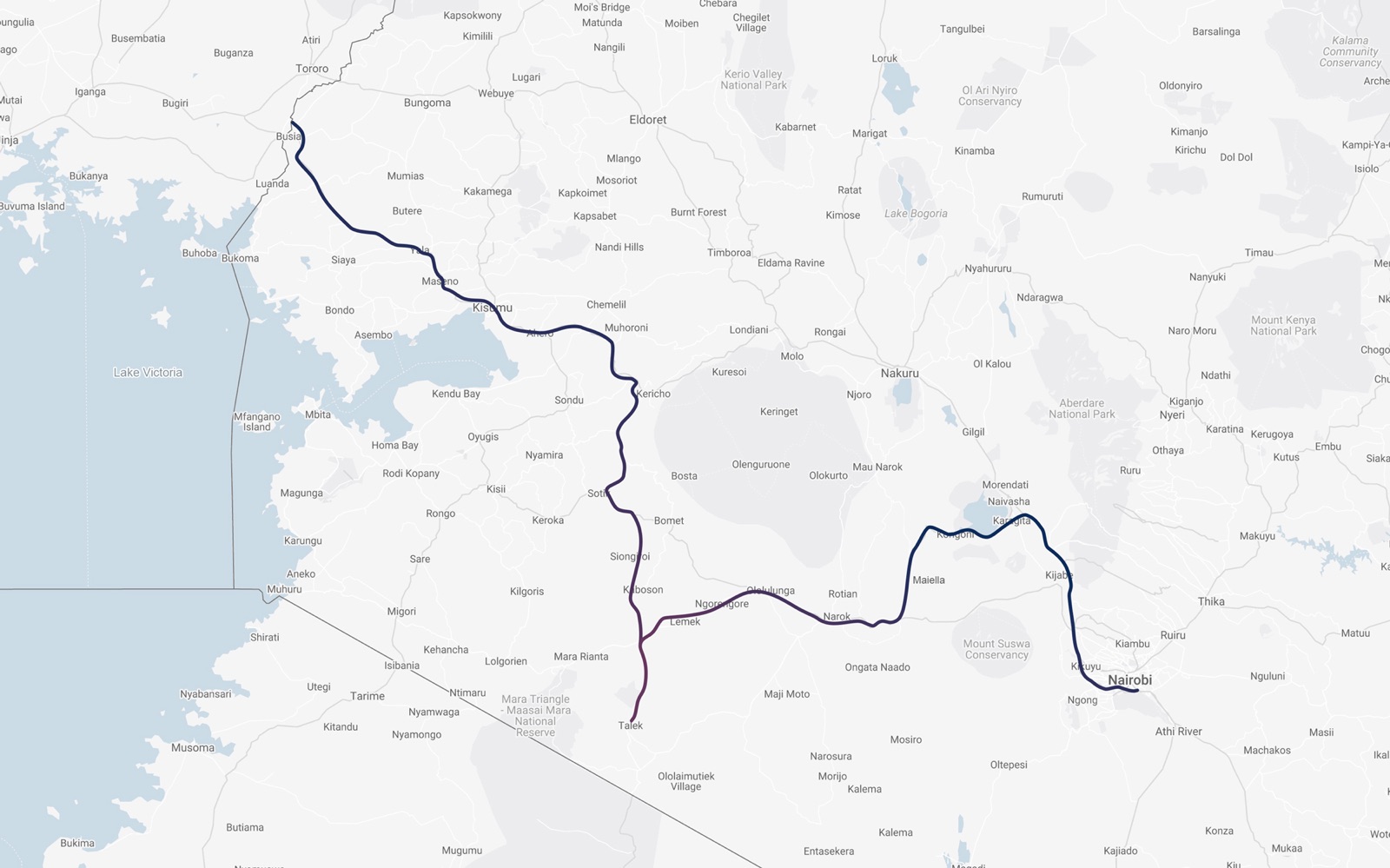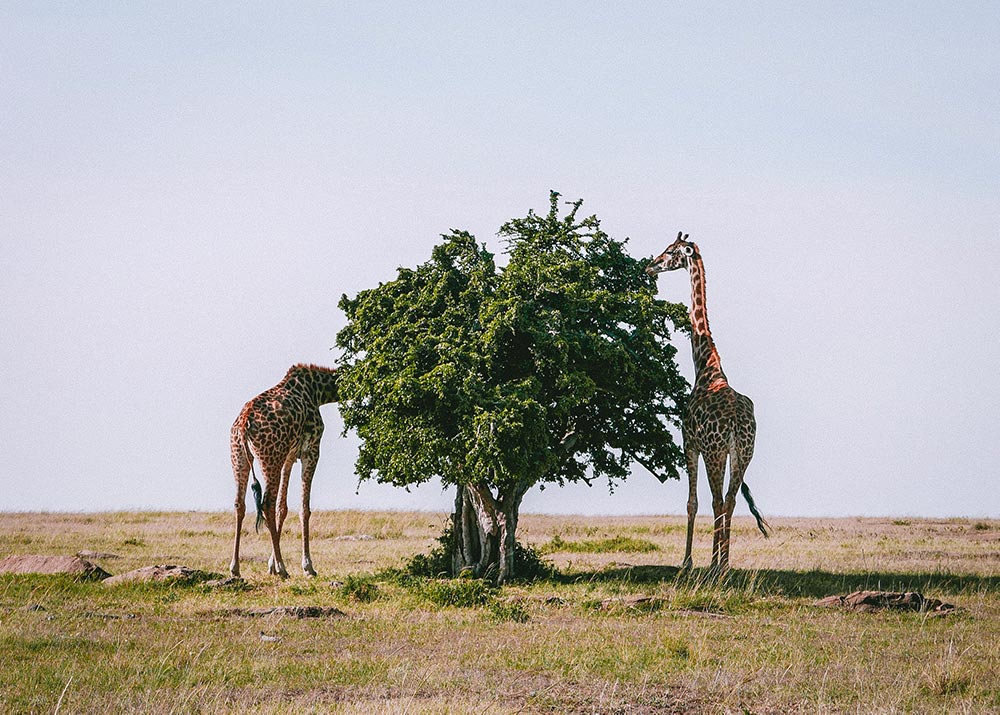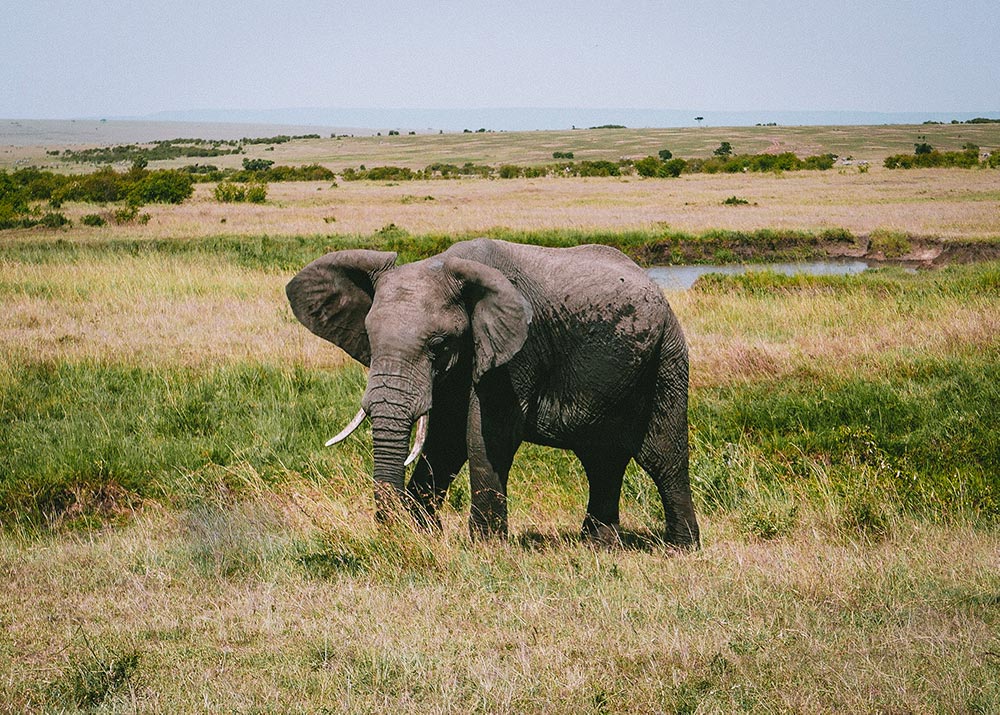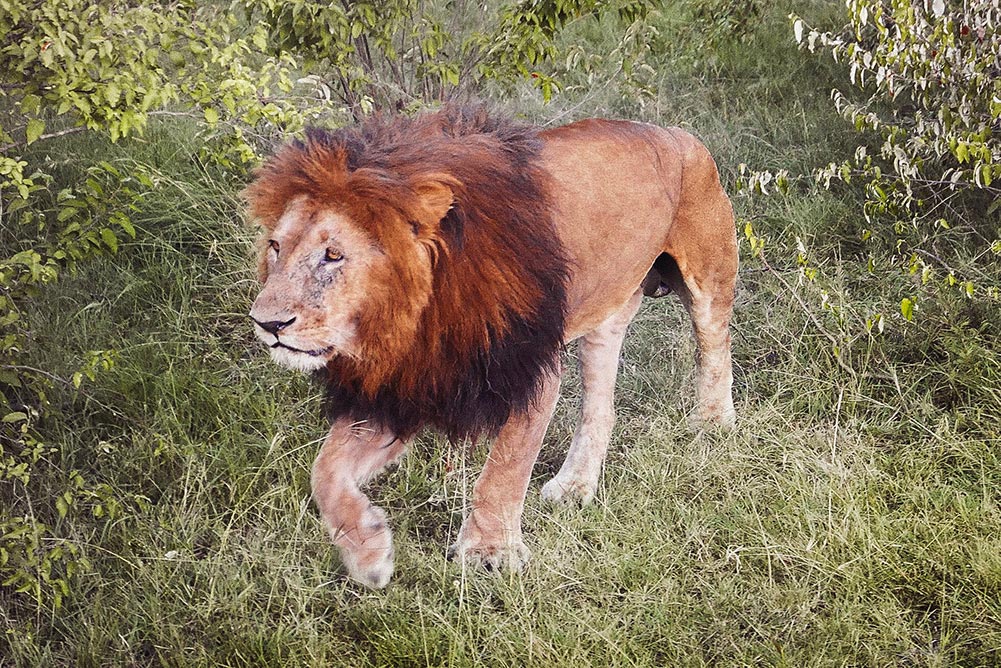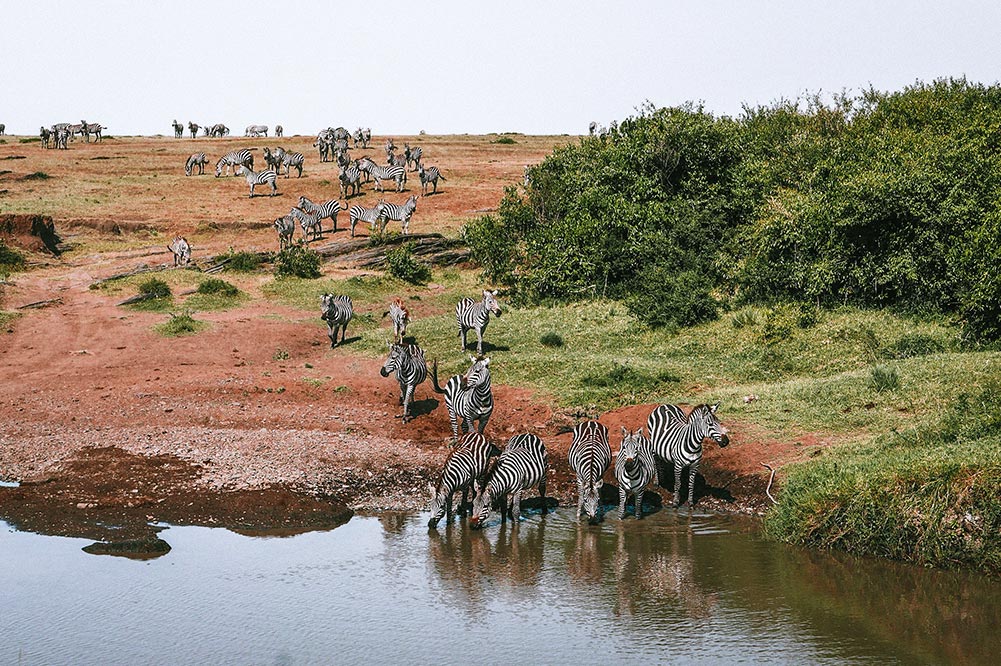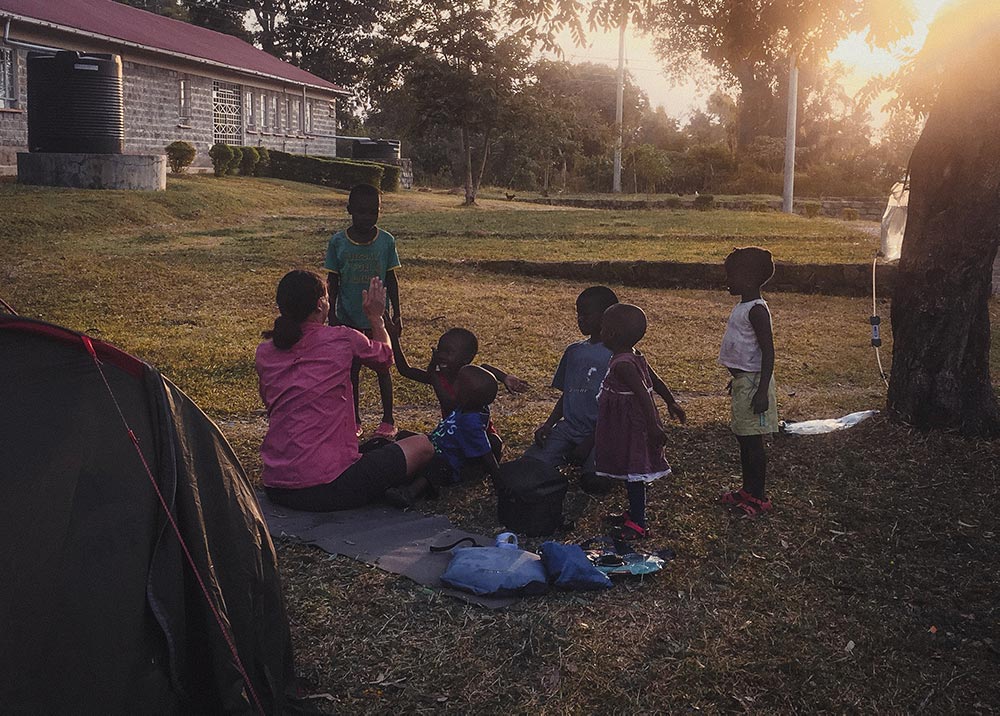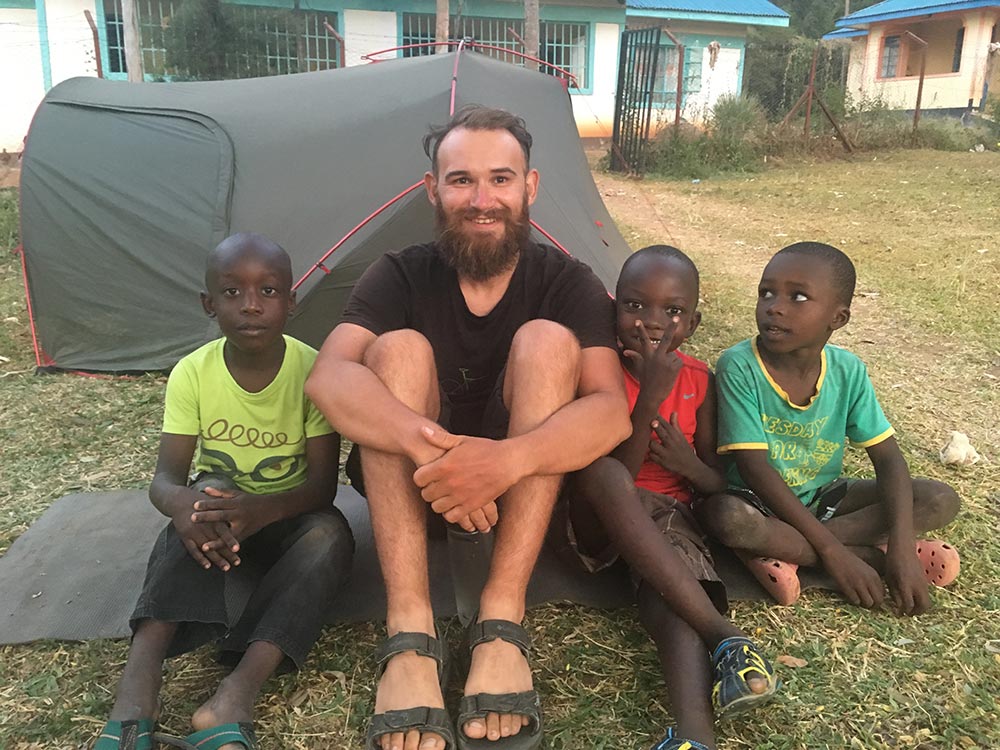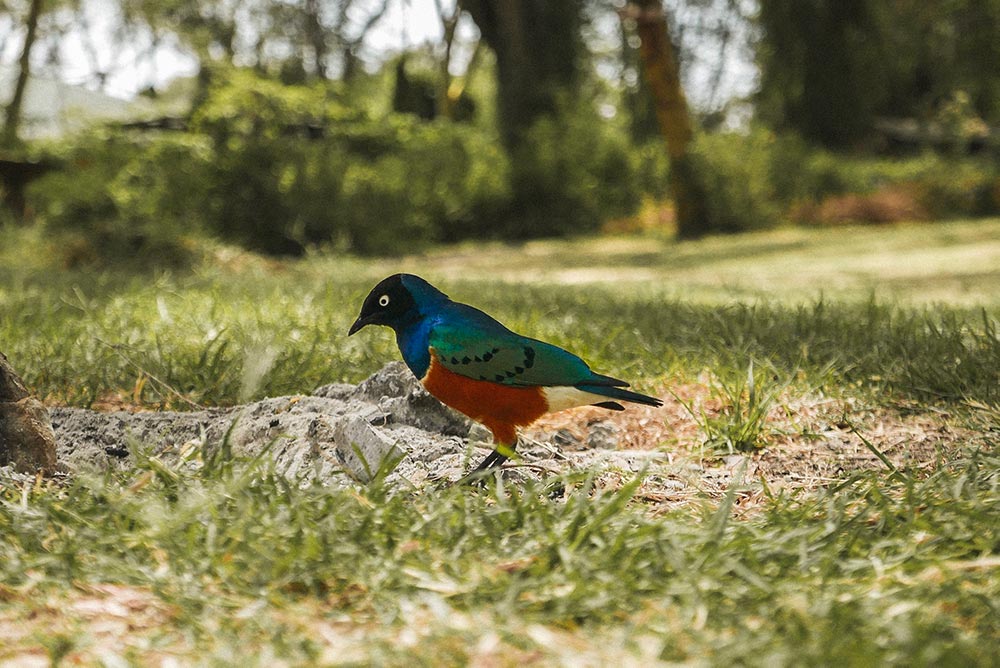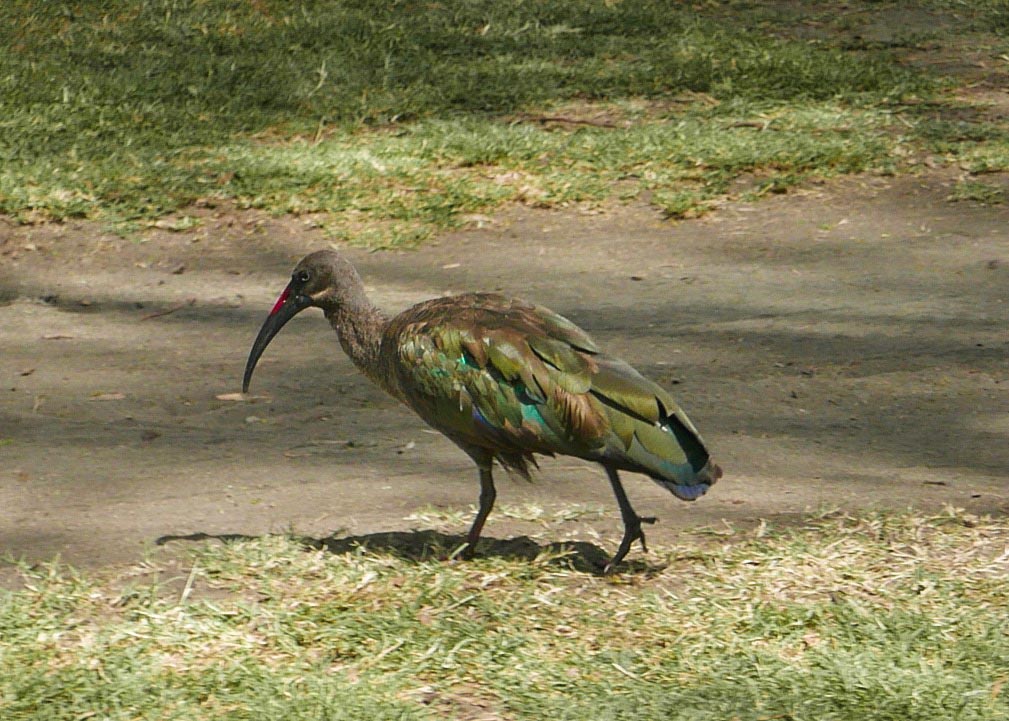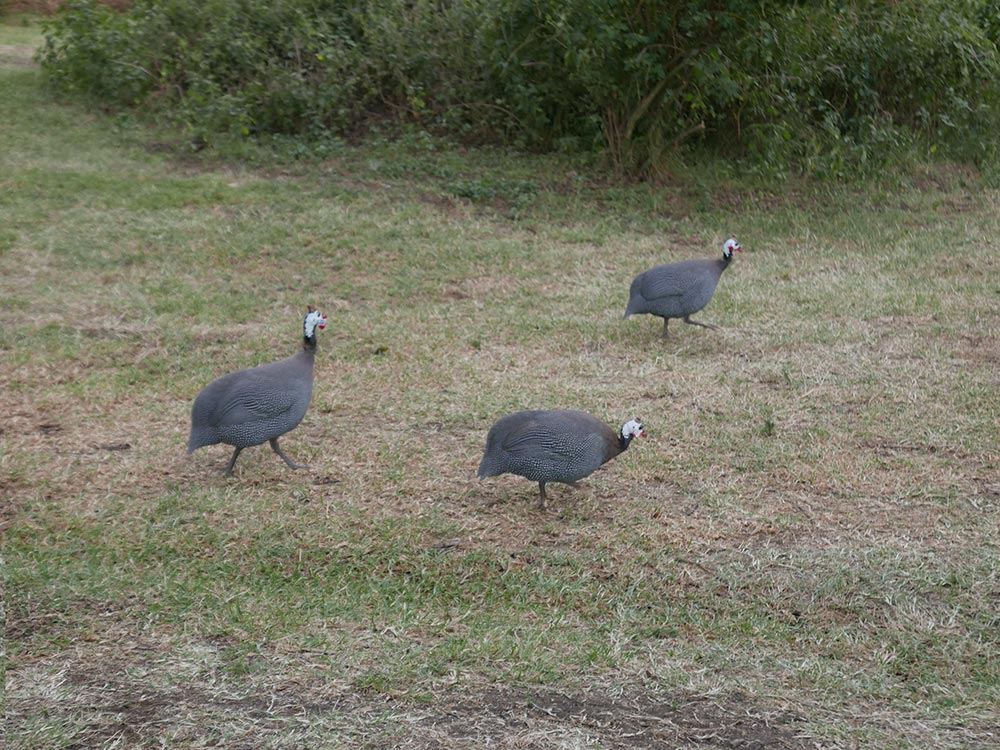KENYA
Where we fell in love with Africa.
Country #14
Kenya.
Cycled
726 km / 451 mi
6,771 m / 22,215 ft
Duration
20 days.
Route
We flew into Jomo Kenyatta International Airport and stayed at a hotel close to the airport, we then made our way towards Lake Naivasha, bypassing the centre of Nairobi. From there we headed south to Maasai Mara National Reserve, where we went on a safari, before cycling northwest towards Uganda via Kericho and Kisumu. We crossed into Uganda at Busia.
For more detail on our route through Kenya, including roads conditions, water availability and accommodation, please see our East Africa Route page.
Month
February.
Weather
It was dry season. As you’d expect it was very hot and there was next to no rain. There were a few epic thunderstorms and it did get cooler the higher you were.
Highlights
Safari at Maasai Mara National Reserve.
Camp Carnelly’s at Lake Naivasha, which is known for hippo spotting.
Food
Supermarkets are expensive! We really had to be smart with our shop. Of all the supermarkets we visited, Naivasha was probably the cheapest. Locals shops were cheap too, although they didn’t often sell everything we wanted. We would buy our basics at a large supermarket, like rice, oats and peanut butter, then buy bread and veg from independent shops and food markets.
Drinking water
We filtered and then UV treated all of our water using our Gravity Works filter and SteriPen. Double check that your filter removes viruses as well as bacteria, as most only remove bacteria. There are many waterborne diseases found in Kenyan water sources so it’s vital you properly treat your water. We even used treated water for washing our dishes.
Coffee
Big supermarkets had a small selection. Make sure you buy ground coffee! We nearly made the mistake of buying beans.
Primus Omni-Fuel stove fuel
We used petrol. 1 L was around £0.80.
Accommodation
Hotels in and around Nairobi are pricey, but if you’re flying in, you’ll likely have no choice. Outside of Nairobi, expect to pay around 1,000 Kenyan Shilling per night. There is a good selection of campsites around Kenya, too, especially near the game reserves, which make visiting them more affordable.
Wild camping
We never wild camp due to the whole wild animal thing. But we did ask in villages if we could camp there – no one turned us away. If you know there’s a police station in town, ask to speak to the Chief. If there isn’t, simply ask if there’s somewhere secure to pitch your tent. We camped at schools, police stations and hospitals. There was usually a water tap and always a toilet.
Safety
Kenya gets a bad rep at home. Yes it’s not as safe as camping or cycling in, say, the Cotswolds, but with a little common sense, you’ll be fine. Every Kenyan we met was super welcoming and friendly. We never once felt threatened or scared. The only real danger we felt was from wild animals, but bumping into them comes down to luck, or lack of, really. That being said, the situation around the whole of Africa often changes rapidly, so make sure you have up-to-date advice (don’t go on a blog from 2011...). And note that the Kenyan General Elections are in 2022 and they’ll likely be some unrest.
Roads
Roads out of Nairobi are mental, so choose your path wisely. Once you leave the capital, however, the major roads we cycled on had a generous hard shoulder and pretty minimal traffic. Don’t just stick to the tarmac though! You’ll experience a totally different side of Kenya if you go off-road. The small villages are alive with music and energy; they’re amazing. Just double check your route with locals, so you’re not venturing into an area you should probably avoid.
Drivers
Actually okay. When we found ourselves on a main road without a hard shoulder, people passed us safely. The roads weren’t as busy as we expected either.
Visa (British)
We bought the East Africa Tourist Visa on arrival at Jomo Kenyatta International Airport. For $100 each this visa allowed us 90 days’ travel through Kenya, Rwanda and Uganda. We printed and filled in the form before arriving and paid in US dollars cash. There is no option for card payment.
SIM card
Safaricom is said to have the best coverage across Kenya. We bought a SIM card at the airport to save hunting one out in Nairobi and it turned out to be the same price as if you were to buy it elsewhere. We got a 30 day SIM with 5GB for $10 (cash). Don’t forget to download the Safaricom app, so you can keep an eye on your balance.
Useful links
East Africa Tourist Visa Form – The Kenya High Commission in Australia have created a EATV-specific form. We printed and fill it out before arriving in Kenya. This saved time at the airport.
Safari in Maasai Mara National Reserve – If you’re interested in doing a safarai in Maasai Mara, read our blog on how we did it on a teeny-tiny budget.
Tips
If you’re flying in and arriving after dark, don’t cycle, catch a cab. It’s not advisable to travel after dark. Alternatively try and book an afternoon arrival, if possible.
If you get a Safaricom SIM card, take a photo (or keep) the plastic SIM casing. It has a PIN number on which you’ll be required to enter when your SIM locks. Ours locked regularly.
When paying by card, keep all declined receipts and don’t let the teller walk off with the card machine. Watch the full payment being processed. We use Starling and Monzo, which alert you instantly to a card payment, if you’re online.
If you’re paying for a large bill in cash, for example a safari, count the notes out loud to the teller. We read one of the scams is that people say money is missing or shortchange you.
Maggi Cubes will revolutionise your rice. Just crumbled a couple into the water and stir before cooking.


